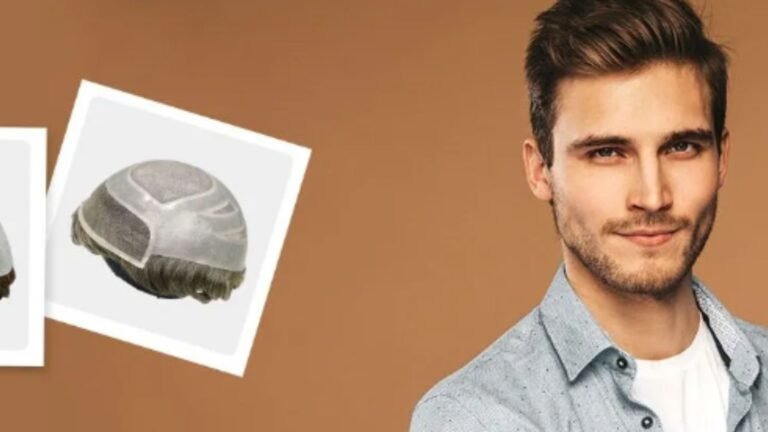Get ready to dive into the exciting world of hair replacements! Whether you’re a salon owner or a distributor, choosing the right wholesale hair replacement systems can make a huge difference in your business. With so many options out there, it’s crucial to know what to look for to ensure you’re getting top-quality products that’ll wow your clients.
In this article, we’ll walk you through the essentials of picking the best hair replacements when buying wholesale. We’ll explore different types of systems, highlight key factors to consider, and give you tips on evaluating suppliers. By the end, you’ll have the knowledge to make smart purchasing decisions and keep your customers coming back for more. Let’s jump in and uncover the secrets to success in the hair replacement industry!
Understanding Different Types of Hair Replacement Systems
Let’s dive into the exciting world of hair replacement systems! There’s a whole range of options out there, each with its own unique features. We’re going to explore three main types: lace systems, skin/silicone systems, and monofilament systems. By the time we’re done, you’ll be a pro at spotting the differences and knowing which one might work best for your wholesale needs.
Lace Systems
Lace hair systems are all the rage, and for good reason! They’re incredibly natural-looking and breathable, making them a top choice for many customers. There are two main types of lace bases to keep an eye out for:
1. Swiss Lace: This is the crème de la crème of natural appearance. It’s super thin, delicate, and soft, offering unbeatable comfort and breathability. The downside? It doesn’t last as long as other options bono hair.
2. French Lace: Here’s where durability meets style! French lace strikes a perfect balance between comfort, breathability, and longevity. Its naturally translucent color is perfect for creating the illusion of hair growing right out of the scalp.
Lace systems are fantastic for achieving that virtually invisible hairline. They’re lightweight and comfortable, which your customers will love. However, keep in mind that they’re a bit delicate and might need more frequent replacements.
Skin/Silicone Systems
Now, let’s talk about skin bases. These are the chameleons of the hair replacement world! They’re soft, light, and easy to attach and clean. The best part? They look almost like your own scalp when worn.
Here’s a quick rundown of the different skin base options:
1. Ultra-thin skin (0.02-0.03mm): This is the thinnest and lightest option. It looks incredibly real but only lasts about 1-2 months.
2. Super thin skin (0.06mm-0.08mm): A great middle ground between natural look and durability, lasting around 2-3 months.
3. Thin(Poly) skin (0.1mm-0.12mm): More durable, lasting 3-6 months, but slightly thicker.
4. Silicon skin (0.25mm): The most durable thin skin base, lasting 6-12 months, but with a slightly less natural appearance.
Skin bases are known for being the thinnest and lightest options on the market. They’re great for achieving that super-realistic look. However, they’re not as breathable as lace or mono systems, so they might not be ideal for customers in hot climates or those who are very active.
Monofilament Systems
For those customers who prioritize durability over a hyper-realistic look, monofilament systems are the way to go! These bad boys are known for their impressive lifespan, outlasting both full lace and skin bases. Click here
Here’s what makes mono systems special:
1. Construction: Individual human hairs are meticulously hand-tied to a fine mesh material, creating the illusion of hair growing naturally from the scalp.
2. Comfort: The mesh is surprisingly soft and comfortable to wear, while still holding up to daily use.
3. Durability: Mono bases are often made using polyester or ultra-fine mesh material. This poly layer adds extra strength, allowing for higher hair density.
4. Versatility: Monofilament systems are usually constructed along with poly or lace, which provides even more durability.
These systems are ideal for customers looking for a semi-permanent solution. They can hold greater hair density and are perfect for those who want a low-maintenance option that lasts.
Remember, each type of hair replacement system has its pros and cons. Lace systems offer unbeatable natural looks but require more care. Skin systems provide that ultra-realistic appearance but might not be as breathable. Monofilament systems are the champions of durability but might not look as natural as the other options.
When buying wholesale, consider your target market and what they value most in a hair replacement system. By offering a variety of options, you’ll be able to cater to a wide range of customer needs and preferences. Get ready to transform lives with these amazing hair replacement solutions!
Key Factors to Consider When Buying Wholesale
When you’re diving into the world of wholesale hair replacements, there are some crucial factors you need to keep in mind. Let’s explore the key elements that’ll help you make the best choices for your business and customers!
Quality of Hair
The quality of hair is a game-changer in the hair replacement industry. You want to offer your customers the crème de la crème, right? Here’s what you need to know:
1. Human Hair vs. Synthetic: Human hair is the gold standard for natural-looking and versatile hair systems. It can be styled, colored, and treated just like natural hair. Synthetic hair, while more resistant to color changes, is best for gray colors but can be sensitive to friction.
2. Types of Human Hair:
– Indian Hair: Super soft, smooth, and adaptable to processing. It’s a popular choice and offers great value for money.
– Indian Remy Hair: Top-class option, perfect for high-end systems. It’s super soft and silky, with all hair running in the same direction.
– Chinese Virgin Hair: Incredibly strong and straight, ideal for heavy processing without compromising quality.
– European Hair: The finest and softest option available, but a bit more fragile.
3. Remy vs. Non-Remy: Remy hair is the cream of the crop. It’s carefully processed to keep the cuticles intact and aligned, reducing tangling and matting. This results in a more natural look and feel that your customers will love!
Base Construction
The base of a hair system is like the foundation of a house – it’s crucial for comfort, durability, and natural appearance. Here’s what to look out for:
1. Lace Bases: These are breathable and natural-looking, perfect for hot climates. They come in Swiss and French lace options, with French lace offering a better balance of durability and natural appearance.
2. Skin/Silicone Bases: These are super realistic and easy to wear. They come in various thicknesses, affecting both lifespan and natural appearance. Thinner bases (0.03mm) look more natural but last only about a month, while thicker options (0.25mm) can last 6-12 months.
3. Monofilament Bases: These are the champions of durability, lasting 3-6 months. They’re comfortable and can hold higher hair density, making them ideal for customers seeking a semi-permanent solution.
4. Combo Bases: These combine different materials to offer the best of multiple worlds – natural appearance, comfort, and durability.
Remember, the thinner the base, the more natural it looks, but it might sacrifice some durability. It’s all about finding the right balance for your customers’ needs!
Color and Texture Options
Offering a wide range of color and texture options is key to satisfying diverse customer needs. Here’s what to consider:
1. Color Selection: Provide various ways for customers to choose their perfect color:
– Color ring references
– Hair sample matching (the best option for accuracy)
– Matching to an old unit (be cautious of color changes in old systems)
2. Hair Length: For men, 5″-6″ is the most common length. Women’s needs vary more widely, so offer a range of options.
3. Hair Density: This affects how full the hair system looks. Offer a range from extra light (60%) to heavy (160%) for men, and similar options for women.
4. Wave and Curl: Provide various options to match different hair textures:
– For men: Straight, 30mm, 25mm, 19mm, and 4mm afro curl
– For women: Silky straight, loose curl, natural straight, deep wave, kinky straight, deep curl, body wave, and kinky curl
5. Hair Direction: Offer multiple hair direction options to cater to individual preferences and natural hair growth patterns.
By considering these factors, you’ll be able to offer a fantastic range of high-quality hair replacement systems that meet your customers’ diverse needs. Remember, the key is to provide options that balance natural appearance, comfort, and durability. Get ready to transform lives with these amazing hair replacement solutions!
Evaluating Wholesale Suppliers
Let’s dive into the exciting world of finding the perfect wholesale suppliers for your hair replacement business! This step is crucial to ensure you’re offering top-notch products to your customers. We’ll explore three key areas to focus on when evaluating potential partners.
Reputation and Experience
When you’re on the hunt for wholesale suppliers, their reputation and experience are super important. You want to team up with someone who knows their stuff and has a track record of delivering quality products. Here’s what to look out for:
1. Check for licenses and certifications: Make sure your potential supplier is legit and authorized to distribute the brands they carry.
2. Read reviews and testimonials: See what other businesses are saying about their experiences with the supplier. This can give you valuable insights into their reliability and customer service.
3. Ask for references: Don’t be shy about reaching out to other businesses that have worked with the supplier. Their firsthand experiences can be incredibly helpful.
4. Research their track record: Look into how long they’ve been in the business and their overall standing in the marketplace.
5. Visit their premises: If possible, pay a visit to their physical location. This can give you a better feel for their operations and let you interact with their customer service team in person.
Product Range
A great wholesale supplier should offer a wide variety of hair replacement options to cater to your diverse customer base. Here’s what to consider:
1. Types of hair: Look for suppliers offering both human hair and synthetic options. Human hair is fantastic for versatility, while synthetic hair can be great for specific styles and colors.
2. Hair quality: Ask about the different grades of hair available, from Indian Remy to European hair. Each has its own unique characteristics and price points.
3. Base construction: Ensure they offer a range of base options, including lace, skin/silicone, and monofilament. This variety will help you meet different customer needs.
4. Color and texture options: A good supplier should provide a wide range of colors and textures to match various hair types and preferences.
5. Sample availability: Many suppliers offer samples of their products. This is a great way to test the quality, texture, and color of the hair before making a larger purchase.
Pricing and Minimum Order Quantities
Now, let’s talk money and quantities! Finding a supplier with competitive pricing and reasonable minimum order quantities (MOQs) is key to keeping your business profitable and flexible.
1. Compare prices: Request quotes from different suppliers and analyze the costs carefully. Don’t forget to factor in shipping costs, delivery times, and any additional charges.
2. Consider quality vs. price: While it’s tempting to go for the cheapest option, remember that quality is crucial in the hair replacement industry. Find a balance between affordability and quality.
3. Negotiate MOQs: Discuss minimum order quantities with potential suppliers. This will help you understand their requirements and ensure you can meet their thresholds.
4. Look for package deals: Some suppliers offer discounts on bulk purchases or package deals. Keep an eye out for these opportunities to save money.
5. Evaluate payment terms: Consider suppliers who offer flexible payment arrangements or early payment discounts. This can help with your cash flow management.
6. Assess profit margins: Make sure the supplier’s pricing allows you to maintain healthy profit margins on your products.
Remember, finding the right wholesale supplier is all about balancing quality, variety, and cost. Take your time to evaluate different options, ask plenty of questions, and don’t be afraid to negotiate. With the right supplier by your side, you’ll be well on your way to offering amazing hair replacement solutions to your customers!
Conclusion
Choosing the right wholesale hair replacements has a significant impact on your business success. By understanding the different types of systems, considering key factors like hair quality and base construction, and thoroughly evaluating suppliers, you’re setting yourself up to offer top-notch products that’ll wow your clients. Remember, it’s all about finding that sweet spot between natural appearance, comfort, and durability to meet your customers’ diverse needs.
As you embark on this journey to transform lives through amazing hair replacement solutions, keep in mind that partnering with the right supplier is crucial. To take your business to the next level, consider partnering with Bonohair Today. With the knowledge you’ve gained and the right partner by your side, you’re well-equipped to make smart purchasing decisions that’ll keep your customers coming back for more. Here’s to your success in the exciting world of hair replacements!





